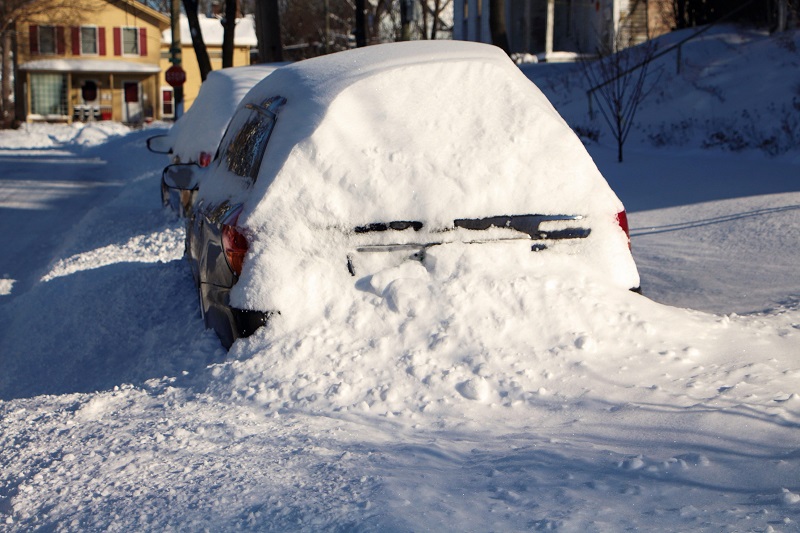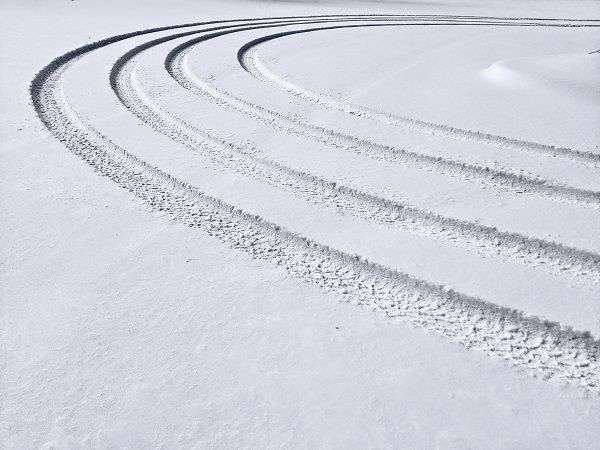Ah, winter. Falling snowflakes, peppermint lattes, and dangerous driving conditions. I can remember the first winter I had my driver’s license and the long drive from home to school, school to work, then back home again--it was pretty scary! Living in Northeast Ohio provided plenty of snow each winter, and as a new driver, it took some time for me to get comfortable navigating wintery roads. One of the most worrisome hazards in the winter is black ice.
Your reaction to a hazard can make the difference between a safe drive home and not making it home at all. We want you to stay safe this winter. Here’s the secret to navigating winter roads with confidence:
Drive Defensively!

Defensive driving is at the top of our list because if you’re not driving defensively, you’re not driving safely. Defensive driving means staying alert and actively avoiding hazards before you encounter them. Defensive driving techniques will be your saving grace in the winter.
While there are many defensive driving techniques, we’ll focus on IPDE in this article. IPDE stands for Identify, Predict, Decide, Execute. This technique is helpful for all driving situations, including navigating winter roads. Here’s how it works:
1. Learn how to identify black ice.
Identify is the first step in the IPDE process, and for good reason. You can’t avoid a hazard if you don’t know the hazard exists! Identifying black ice is difficult, as it’s a thin, transparent layer of ice that tends to blend in perfectly with the pavement. This makes it extremely difficult to spot, leaving drivers with very little time to react if they’re not prepared.
Understanding where and when black ice is most likely to form will allow you to identify it as a potential hazard before you even leave your house. Black ice forms during freezing temperatures when the road is cold and wet. This means that there can be black ice even if there isn’t a lot of snow on the ground.
Some areas are more likely to have black ice than others, including:
- Shaded areas
- Just before and after a bridge or overpass
- The road underneath overpasses
While these are the most common places you’ll encounter black ice, remember that black ice can form anywhere on the road in the right conditions.
2. Predict when you’re likely to encounter black ice.
Now that you know where and when black ice is most likely to occur, you can form some predictions about where you might encounter it on your drive. Some things you can do before you hit the road to help you predict black ice include:
- Check the weather! If it will be freezing that day, chances are you may come across black ice on your drive. Make sure to take a look at the weather for your commute home, too.
- Review your route ahead of time. We know that black ice is more likely to occur in shady areas, before and after bridges or overpasses, and below overpasses. Are you going to encounter any of these things on your drive?
- Take a look at traffic patterns and road closures. It’s good to be prepared for what’s ahead so that you can act accordingly.
Make sure to go through your prediction list and prepare for potential hazards like black ice before you start your drive.
3. Decide how to react.
As we mentioned, you have very little time to react to black ice once you’ve spotted it--if you spot it at all. Panicking, slamming on your brakes, and swerving into oncoming traffic are some dangerous reactions to black ice. You won’t have time to Google what to do while your car is sliding on black ice, so take the time now to plan what you’ll do in the moment.
Some of the ways you can avoid a dangerous reaction when you encounter black ice include:
- Drive slowly. There are times that you’ll need to drive below the speed limit, even if you’re in a vehicle that handles snow and ice well. Reducing your speed gives you a little more time to react to a hazard.
- Similarly, increase your following distance. Leave plenty of space between your vehicle and the one ahead of you--at least double the distance in poor conditions.
- Use your headlights, but not your high beams. You may know that you shouldn’t use your high beam lights during rain or fog. The same is true when it’s snowing. The bright lights of your high beams reflects off the precipitation, causing glare and obscuring your vision.
Here’s what to do if you absolutely cannot avoid black ice:
- Slowly take your foot off the accelerator, and don’t slam on your brakes. If you have an anti-lock braking system, slowly put pressure on the brake pedal—braking too hard or too quickly will cause your vehicle to skid out of control, and it’s difficult to recover once you’re at that point.
- Keep your steering wheel straight--in the best case scenario, your car will simply coast (i.e., continue forward without you applying the accelerator) across the ice and regain traction once you’re back on the pavement. Black ice is often patchy, allowing you to get back on the pavement relatively quickly.
- It’s possible that you’ll start to feel the back of your car sliding to the left or the right. Let’s say the back of your car is sliding to the right. Your goal is to keep the front of your car in the front, and the back of your car in the back--you don’t want to slide sideways across the ice. As the back of your car slides to the right, slowly turn your wheel to the right. This will bring the front of your car in front of you where it belongs. Once your front is in front again, start turning your wheel so that you’re going straight once again.

Keep your course-of-action decision in mind as you drive in conditions that can present black ice.
4. Execute your plan to navigate winter roads.
The final step is to carry out the plan you created in the "Decide" step.
Final Thoughts
There’s no denying that black ice is one of the most intimidating hazards a driver will encounter—that’s why it’s so important to prepare yourself ahead of time so that you’re able to react appropriately in the moment. We hope you use this defensive driving strategy to help you safely navigate the fast-approaching winter roads.
Interested in learning more about traffic safety?
Are you looking for defensive driving and traffic school courses? Do you want a discount on your auto insurance? Do you know a teen who’s ready to take an online driver education course?
Safe2Drive is here to help! We offer convenient online courses for drivers of any age! Visit our website today to learn about the online courses we offer in your state.